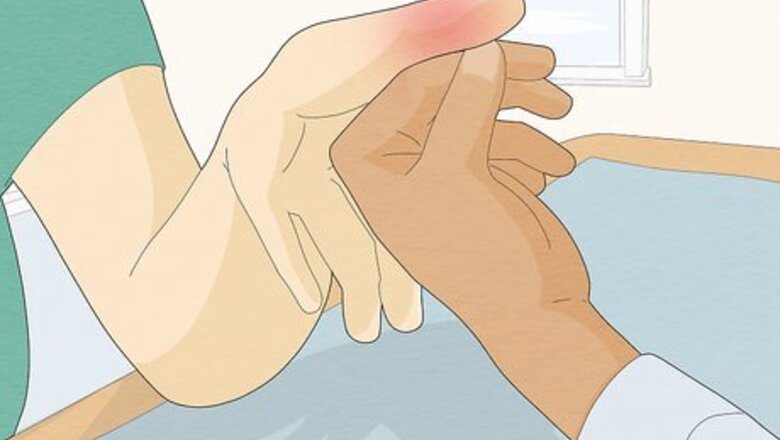
views
Determining if you Need Medical Treatment
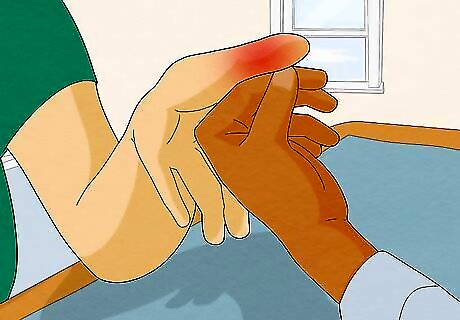
Consult a doctor. If you are at a competition or at school, there will typically be a medical professional there to help. Even though you might believe your thumb is only sprained, it might be a fracture or a dislocation. In some cases, the doctor will need to take an X-ray or MRI to determine how to treat your thumb.
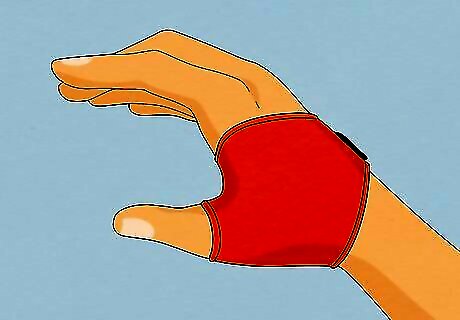
Follow medical advice. If your thumb is fractured or dislocated, do what the doctor has outlined for your treatment. If your thumb is sprained, the doctor will typically suggest purchasing a thumb brace or wrapping your sprained thumb. If you need to have your thumb wrapped or strapped, they will be able to do it for you.
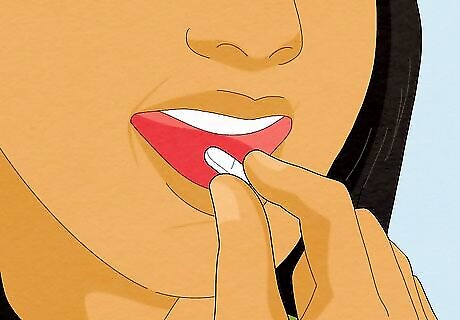
Ask about painkillers. If your thumb is painful (which it almost certainly will be), talk to your medical professional about which painkillers would be most helpful — if you should stick to over-the-counter treatment or if your doctor will prescribe you something stronger. Also ask for how long you should take them.
Wrapping the Sprained Thumb
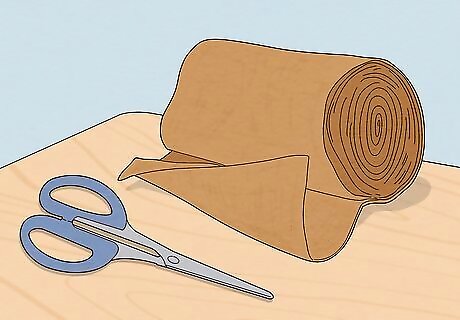
Gather your supplies. Since you will now need to wrap your own thumb, hold the injured hand with the palm facing upward. Use a crepe bandage, or at most an ACE bandage (which can be purchased at a pharmacy), and scissors. Put the end of the bandage against the underside of the wrist of the injured hand, at the hollow where you would take your pulse. Then wrap the back of your hand and your pinkie finger with the other end of the bandage. Pull the bandage over the thumb using your uninjured hand. You can also try adhesive sports tape, but this may irritate the skin and make it harder to remove.
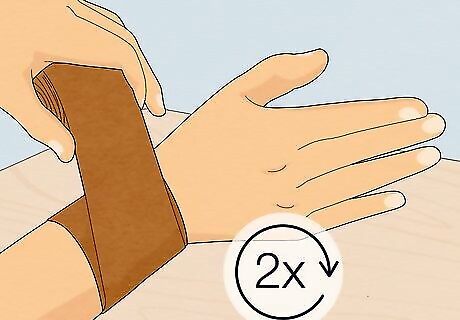
Anchor the wrist. Start by wrapping the wrist in a comfortable, not too tight loop, going around the wrist two times. Make sure you are not cutting off your circulation with the anchor. Your hand and/or fingers will tingle, feel cooler to the touch and start to turn blue if the wrap is too tight.
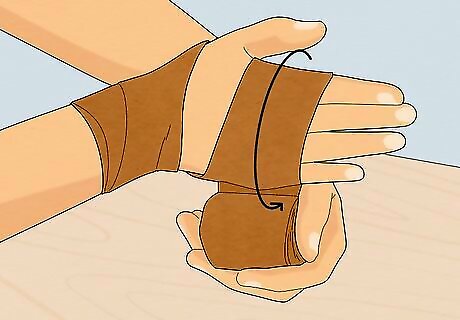
Wrap across the back of the hand and fingers. Start with the end of the bandage at the inside of your wrist, at the hollow where you would take a pulse. From that point, wrap the bandage around the heel of your thumb and across the back of your hand and diagonally across toward the tip of your pinky finger. Wrap around all four fingers, then bring the bandage back behind the fingers and cross it diagonally along the back of the hand. The wrap should end at the side of the hand below the pinkie finger.
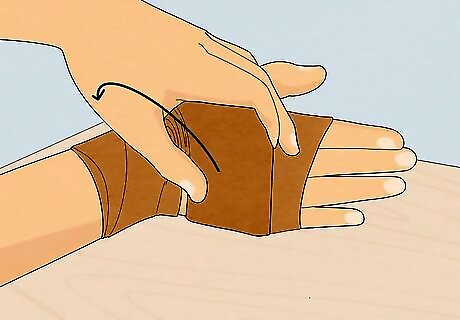
Wrap the wrist and repeat the first loop. Wrap the bandage around the wrist again and then make the same loop across the back of the hand to the pinky, around the fingers, and back down across the back of the hand again.
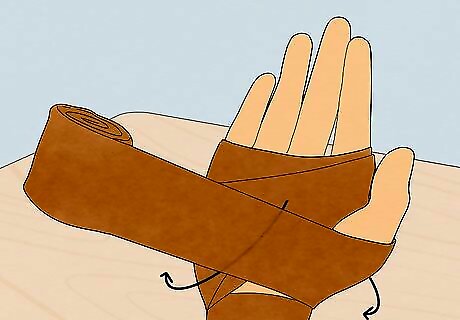
Attach the end of the bandage to the diagonal strip across your palm. Wrap the bandage around thumb and anchor it in place to the diagonal strip of bandage going across the back of your hand.
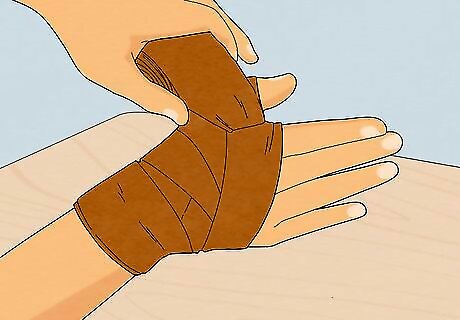
Wrap the bandage around your thumb from one diagonal strip to the other. Do not wrap it so tightly that it begins to cut off circulation. Move the bandage slightly up your thumb with each wrap, overlapping the bandage. The farther up your thumb you wrap, the greater the support. When the thumb is sufficiently wrapped, cross the bandage over the back of the hand and down to the wrist. You can cut off any excess wrap.
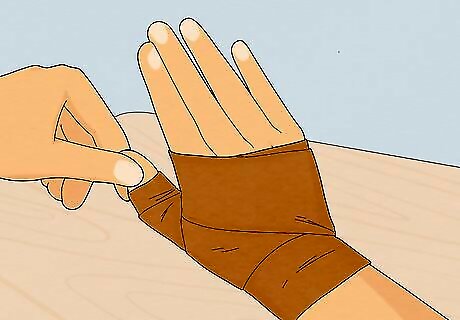
Check the circulation of the affected thumb. You can do this by pinching the nail on your thumb for two seconds. Look at your nail immediately after you let go. If the nail becomes pink again after one or two seconds, then your thumb has good circulation.If it takes more than two seconds for your nail to turn pink again, bandage may be too tight. Unfortunately, the only way to fix this is to remove the bandage and try again: Numbness, tingling or a sense of pressure can also indicate the bandage is applied too tightly.
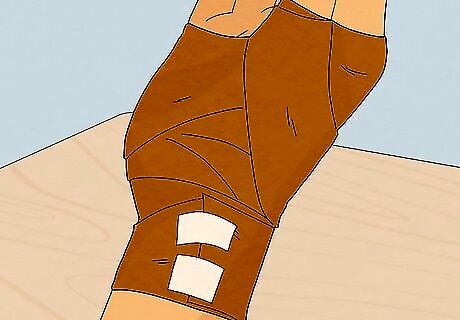
Secure the bandage at the wrist. Use medical tape to secure the end of the bandage at the wrist.
Healing a Sprained Thumb
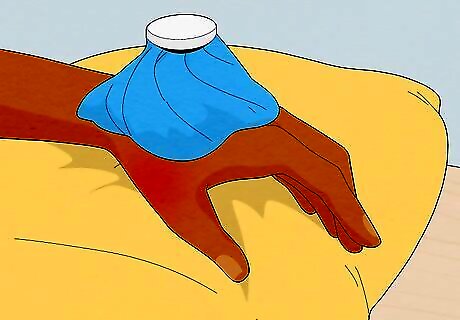
Follow RICE protocol to speed up recovery time. The acronym RICE stands for Rest, Ice, Compression, and Elevation.Even though there is inconclusive evidence that RICE works as well as people believed in the past, many doctors still encourage it as a way to move toward recovery. Rest your thumb on a soft surface and do not try to use it for things, particularly physical activities that could injure it further. Apply ice to your thumb to help reduce pain and swelling. Your ice pack can be a bag of ice or a bag of small frozen vegetables like peas. Make sure to wrap the ice pack in a cloth so that it does not rest directly against your skin. Hold the ice pack on your thumb for 10 – 20 minute intervals. Compress the thumb with the wrapping. Elevate your thumb for five seconds and then bring it back to its resting position. Repeat this process every hour or so.
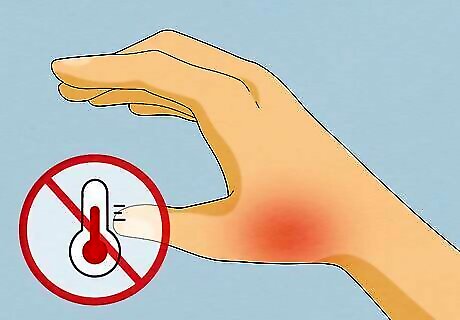
Avoid HARM (heat, alcohol, running, and massage) in the first 72 hours of your recovery. These four elements have been found to impair your ability to heal quickly. In some cases, they can make the sprain worse.
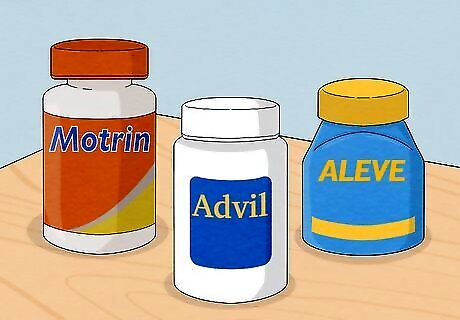
Take medications to ease the pain of a sprained thumb. Non-steroidal anti-inflammatory drugs (NSAIDs) can be taken to relieve pain caused by a sprained thumb, but not within the first 48 hours. Early on, they might impede your recovery. They work to reduce inflammation caused by the sprain. Ibuprofen is one of the most common NSAIDs taken for a sprain. The recommended dose is 200 to 400 mg taken orally every four to six hours. Eat something when you take the ibuprofen to avoid getting an upset stomach. You can also use NSAID gels, which you apply to the skin around where the pain is most severe. Massage the gel into your skin so that it is absorbed fully.
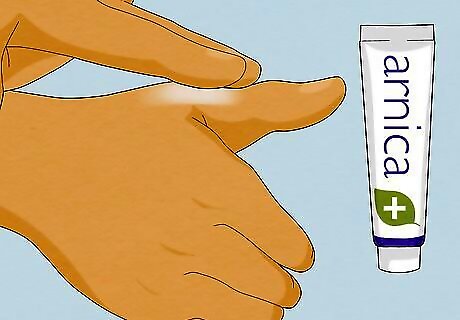
Use arnica to prevent bruising. Arnica is an herb that can help to reduce bruising and swelling caused by a thumb sprain. You can take arnica supplements to combat the swelling, or you can apply it directly to the painful area. Spread arnica cream, which you can purchase at your local pharmacy, over your sprained thumb. Adding a drop or two of geranium or lavender essential oil to the arnica cream may help further reduce bruising.
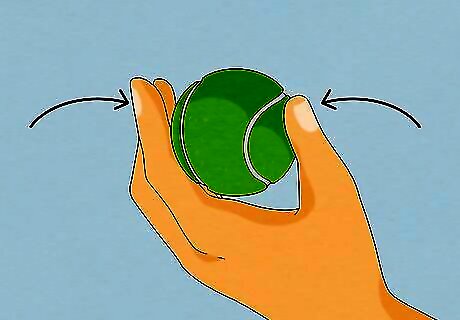
Do exercises to increase thumb mobility. When you sprain your thumb, your thumb’s range of motion will most likely become restricted. In order to regain your range of motion, you will have to do some thumb exercises, such as the following: Rotate the thumb in circles. Pick up small objects like marbles or pencils. Put a little pressure on your thumb as you squeeze the object. Repeat for five minutes. Squeeze a small ball in one hand. Hold for 5 seconds. Repeat. Do two sets of 15 to help strengthen your grip. Move your thumb away from the rest of your fingers. Keep it as far away from your fingers as you can for five seconds, and then return it back to its normal position. Bend your thumb down towards your palm. Keep your thumb as close to your palm as you can for five seconds. After five seconds have passed, return it back to its normal position. Move your thumb away from your palm. This action should be like you are doing a coin toss. Extend your thumb away from your palm for five seconds, then return it to its normal position. Do not apply any external forces to the sprain until late into recovery, if at all. Allow your sprained thumb to do the work — don't pull it or hold it with your other hand.

Eat a healthy diet to promote healing. A healthy diet can help you to recover more quickly. In particular, repairing a sprained thumb requires protein and calcium. Try not to use your thumb while you eat to avoid further injury. For a balanced diet, eat lots of fresh fruits and vegetables, lean proteins, whole grains, and Omega fatty acids. Try to avoid fatty, starchy, or sugary foods.
Understanding Thumb Sprains
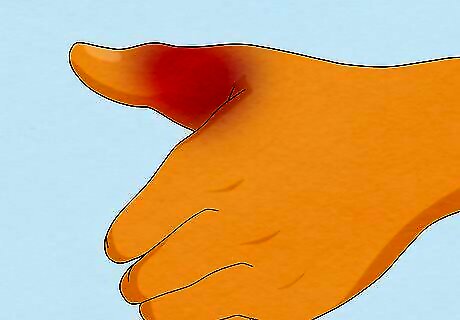
Identify the symptoms of a sprained thumb. If you are not sure that you have actually sprained your thumb, it is helpful to know what symptoms to look for. These symptoms include: Sharp, pulsating and/or excruciating pain Swelling Bruising
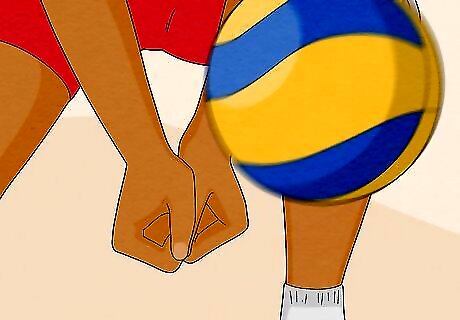
Familiarize yourself with the most common causes of a sprained thumb. While you can sprain your thumb in a variety of ways, the most common causes of a sprained thumb include: Repetitive activities that involve the thumb and put excessive pressure on its joints. Sports like basketball, volleyball, and other sports where there is a good chance that the ball will put a lot of pressure on your thumb Contact sports like rugby and martial arts.
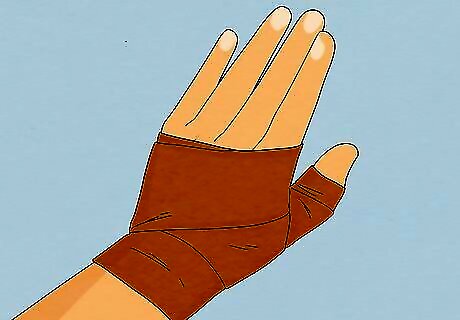
Understand why thumb wrapping is beneficial. Wrapping a sprained thumb does not only help stabilize the injured thumb, but also compresses it. Compression aids in stimulating the flow of lymph fluid, which carries important nutrients to the damaged tissues surrounding the injury. Lymph fluid also removes waste from cells and body tissues which is an important function during the tissue regeneration process. Wrapping the thumb also speeds the recovery process and keeps the injury from getting worse. In order to be completely effective, the bandage must be removed, the injury left to rest, and the bandage re-applied a few times a day. In this way, the lymphatic system can complete its evacuation of the injury site.




















Comments
0 comment